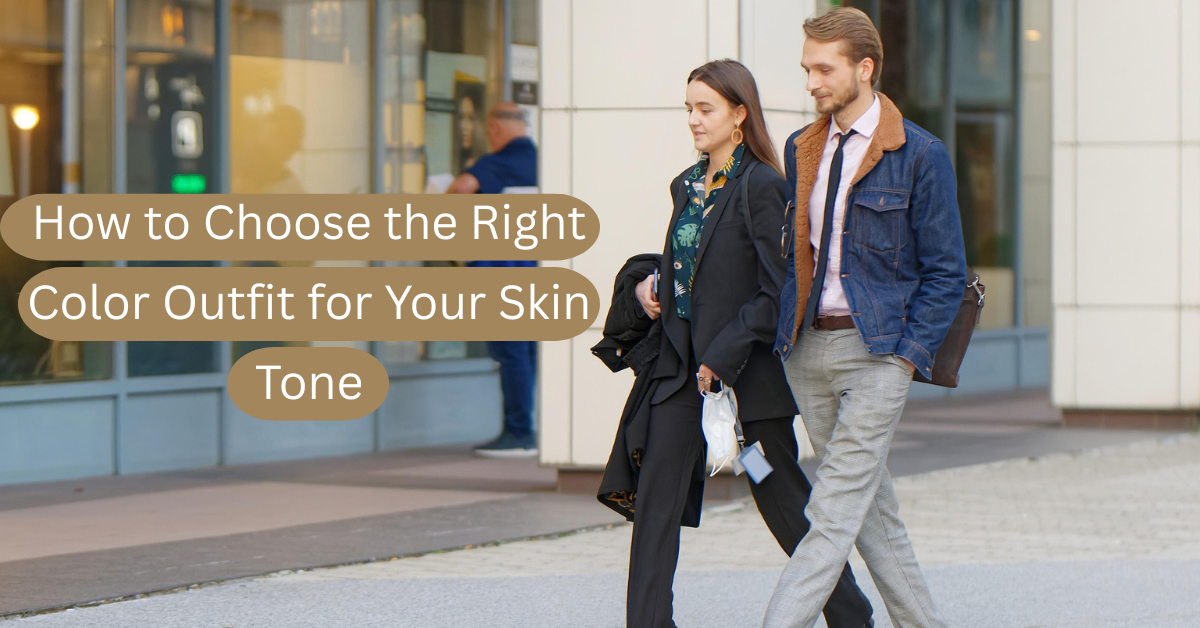Have you ever worn a color that made you feel washed out or just… off? Sometimes the
issue isn’t the outfit itself—it’s the color. Wearing shades that complement your natural skin
tone can instantly elevate your look, making your complexion brighter and your features
more defined.
In this post, we’ll guide you through finding colors that truly flatter your skin tone, helping you
look and feel your best.
Step 1: Understand Your Skin’s Undertone
Skin tone isn’t just about being light, medium, or deep—what really matters is your undertone, the subtle hue beneath your skin. Undertones fall into three basic categories:
- Cool: Hints of pink, red, or blue
- Warm: Shades of yellow, gold, or peach
- Neutral: A balanced blend of warm and cool
Quick Ways to Identify Your Undertone:
- Vein test: Look at your wrist in natural light.
- Blue or purple veins = Cool
- Greenish veins = Warm
- Hard to tell = Likely Neutral
- Blue or purple veins = Cool
- Jewelry preference:
- Silver jewelry pops = Cool undertones
- Gold jewelry looks best = Warm undertones
- Both suit you = Neutral
- Silver jewelry pops = Cool undertones
- White vs. off-white clothing:
- Bright white flatters cool tones
- Creamy white suits warm tones
- Bright white flatters cool tones
Step 2: Pick Colors That Enhance Your Undertone
Once you know your undertone, choose colors that highlight your natural beauty.
If You Have Cool Undertones:
You’ll shine in cooler, jewel-toned shades.
- Try: Sapphire blue, emerald, icy lavender, cool pinks, ruby, soft blues
- Neutrals to wear: Crisp white, navy, charcoal, black
If You Have Warm Undertones:
Earth-inspired hues tend to look best on you.
- Try: Mustard yellow, burnt orange, olive, coral, warm red, honey gold
- Neutrals to wear: Ivory, tan, camel, warm brown
If You Have Neutral Undertones:
You can wear a wide range of shades from both sides of the color spectrum.
- Try: Blush pink, jade, teal, dusty rose, soft red
- Neutrals to wear: Off-white, stone, taupe, soft grey
Step 3: Factor In Your Hair and Eye Color
Your overall coloring—beyond just your skin—can also influence what shades look best.
- Fair hair and light eyes (like blonde and blue): Soft pastels and muted shades usually work well.
- Dark hair and light eyes: Bold, contrasting colors can make your features pop.
- Dark hair and dark eyes: Rich, deep colors like burgundy, navy, and forest green tend to enhance your natural tones.
Step 4: Test Before You Invest
Before adding a new color to your wardrobe:
- Hold the garment near your face in daylight.
- Notice whether your skin appears more vibrant or dull.
- Watch how it affects the appearance of your eyes, lips, and any dark circles.
You can also take a photo in natural lighting to compare how different shades affect your overall look.
Step 5: Style Freely, But Strategically
Color guidelines are just that—guidelines, not rules. If you love a color that doesn’t traditionally suit your tone, there are workarounds:
- Wear it on the lower half of your body.
- Pair it with a scarf, jacket, or makeup that flatters your skin.
- Use it as an accessory rather than the main color.
Finding the right outfit color isn’t about following strict fashion rules—it’s about discovering what makes you feel confident and radiant. When you wear colors that match your undertone, everything from your smile to your eyes tends to stand out.
So, next time you’re choosing an outfit, consider your undertone—and let your natural beauty do the rest.

